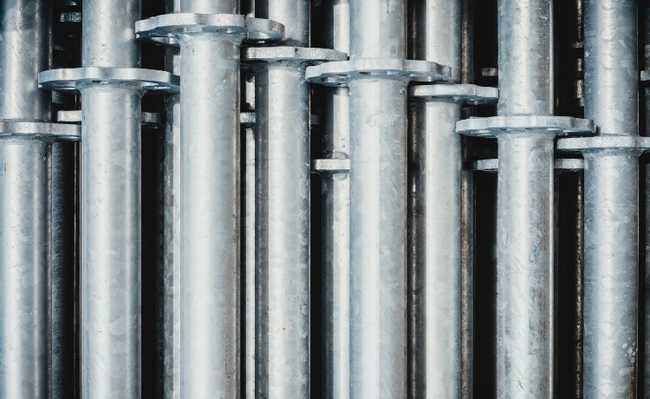What is Renewable Energy
One of the most efficient ways to offset and carry out carbon neutralization is through renewable energies

Image of Erich Westendarp in Pixabay
Renewable energy, alternative energy or clean energy are three possible names for any energy obtained from renewable sources, which does not generate major negative environmental impacts. Consuming 100% clean energy is the most efficient way to offset CO2 emissions. The most used energy source is still coal, with worldwide consumption of more than 28% against almost 13% of renewable energies, such as hydroelectric, solar and wind.
Brazil has a predominantly renewable energy matrix due to hydroelectric plants, despite the growing use of thermoelectric plants fueled by fossil fuels. In Brazil, the energy sector accounts for 30% of CO2 emissions, behind, by a small percentage, only the change in land use and agriculture, which have the greatest contributions to global warming.
Investments and technologies in renewable energy are growing more and more. About 90% of new energy generated in 2015, for example, comes from renewable sources. That was the year of renewable energy; the investment was US$ 286 billion, mainly in solar, biofuels and wind energy. The use of clean energy prevented the release of 1.5 gigatonnes (Gt) of CO2 in 2014; even so, 32.3 Gt of CO2 were generated by fossil fuels (coal, oil and natural gas) in the same year.
Companies that produce clean energy, such as landfill biogas projects, wind, solar and biomass energy projects, among others, can sell their production through the Clean Development Mechanism (CDM), in the form of carbon credits, for the corresponding amount to avoided emissions. To carry out carbon neutralization, the responsible person can buy these carbon credits from renewable energies.
Main types of renewable energy
biomass
Biomass is all organic matter, derived from plants or animals, available in a renewable form. It can come from wood waste, agricultural waste, organic urban waste, manure… And bioenergy is energy derived from the conversion of biomass into fuel. Energy from biomass corresponds to biofuels ethanol, biodiesel, biogas. Brazil is also one of the largest ethanol producers and the use of sugarcane bagasse for thermoelectric plants is also growing. Compared to gasoline, biofuel (ethanol) emits up to 82% less carbon dioxide (CO2) into the atmosphere. Biomass can be one of the great sources of renewable energy if it is grown sustainably, or it can be a great destroyer if handled incorrectly.
Geothermal energy
It is the use of thermal energy from the Earth's interior. This renewable energy source can be used directly (without the production of energy in power plants, using only the heat generated by the ground) or indirectly (when the heat is sent to an industry that transforms it into electricity). The growth per year is 3%, but it is only viable in regions with geological potential for this (especially those close to volcanoes). Depending on the technique used, this type of energy can also directly emit hydrogen sulfide, carbon dioxide, ammonia, methane and boron, which are toxic substances.
hydroelectric
Brazil is the second country in the world with the greatest capacity and generation of hydraulic energy, only behind China. Hydroelectric dams use an elevation to increase the power of water and turn turbines to produce electricity. Despite being considered a clean energy source due to its low emission of greenhouse gases (GHGs), large hydroelectric plants cause significant impacts on the environment; the solution would be to invest in small hydroelectric plants (PCHs) that have less impact. Learn more in the article: "What is hydroelectric energy?".
ocean energy
This type of renewable energy can come mainly from tides (tidal) or waves (ondomotive). The energy source is still little used, as to be efficient and economically viable, the coast needs to have specific characteristics, such as tides greater than three meters. The price of kW is high, making this type of energy unattractive compared to other sources.
Solar energy
Energy from the sun is the most promising renewable energy for the future and the one that receives the most investments. Solar radiation can be captured by photovoltaic plates and converted into thermal or electrical energy. When panels are located in buildings, such as homes or industries, the environmental impacts are minimal. This type of energy is one of the easiest to be implemented in the establishments that want to reduce their CO2 emissions. Panels can be purchased by individuals and companies and installed on the roofs of their establishments, for example. Learn more about this renewable energy source: "Solar energy: what it is, advantages and disadvantages".
wind energy
Brazil has a great wind potential, which is why we joined the ranking of the ten most attractive countries in the world for investments in the sector. The CO2 emission of this alternative energy source is lower than that of solar energy and it is an option for the country not to depend only on hydroelectric plants. Investments in wind farms are a great option for neutralizing carbon emitted by companies, activities, processes, events, etc. Learn more: "What is wind energy?".
Nuclear energy
Nuclear energy is not considered a renewable energy, but an alternative energy with low carbon emissions. Among the energies presented here, nuclear is the one that emits less CO2, however there are many disadvantages of its use. The possibility of use raises a global debate about the priorities of each country. For example, the United States has stopped emitting 64 billion of greenhouse gases with the use of nuclear energy, but it runs risks, such as when leaks and contamination occur - famous cases occurred in Chernobyl, Ukraine, and Fukushima, Japan The risks and impacts of this type of accident are immense. Not to mention that, even if there is no problem, nuclear waste is very difficult to dispose of.
comparisons
Analyzing the renewable energy life cycle, including manufacturing, installation, operation and maintenance, it is clear how the amount of CO2 emitted by different sources is minimal compared to traditional sources. A report from the Intergovernmental Panel on Climate Change (IPCC) shows the amount of CO2 emitted by the main energy sources :
- Coal - 635 to 1,633 grams of CO2 equivalent per kilowatt-hour of generation (gCO2eq/kWh)
- Natural Gas - 272 to 907 gCO2eq/kWh
- Hydroelectric - 45 to 227 gCO2eq/kWh
- Geothermal energy - 45 to 90 gCO2eq/kWh
- Solar energy - 32 to 90 gCO2eq/kWh
- Wind energy - 9 to 18 gCO2eq/kWh
- Nuclear energy - 13.56 gCO2eq/kWh
The key word for neutralization is adaptation. Companies can invest in clean energy from certified projects, ensuring quality and origin at the time of purchase, protecting the consumer. In Brazil, the energy case is not so problematic, since our matrix comes mainly from hydroelectric plants, considered a renewable energy, despite the controversies. But it is worth remembering that there are energies capable of further reducing emissions, as they produce less CO2 than hydroelectric power, such as solar and wind power!
Watch the video (in English) on renewable energy:










